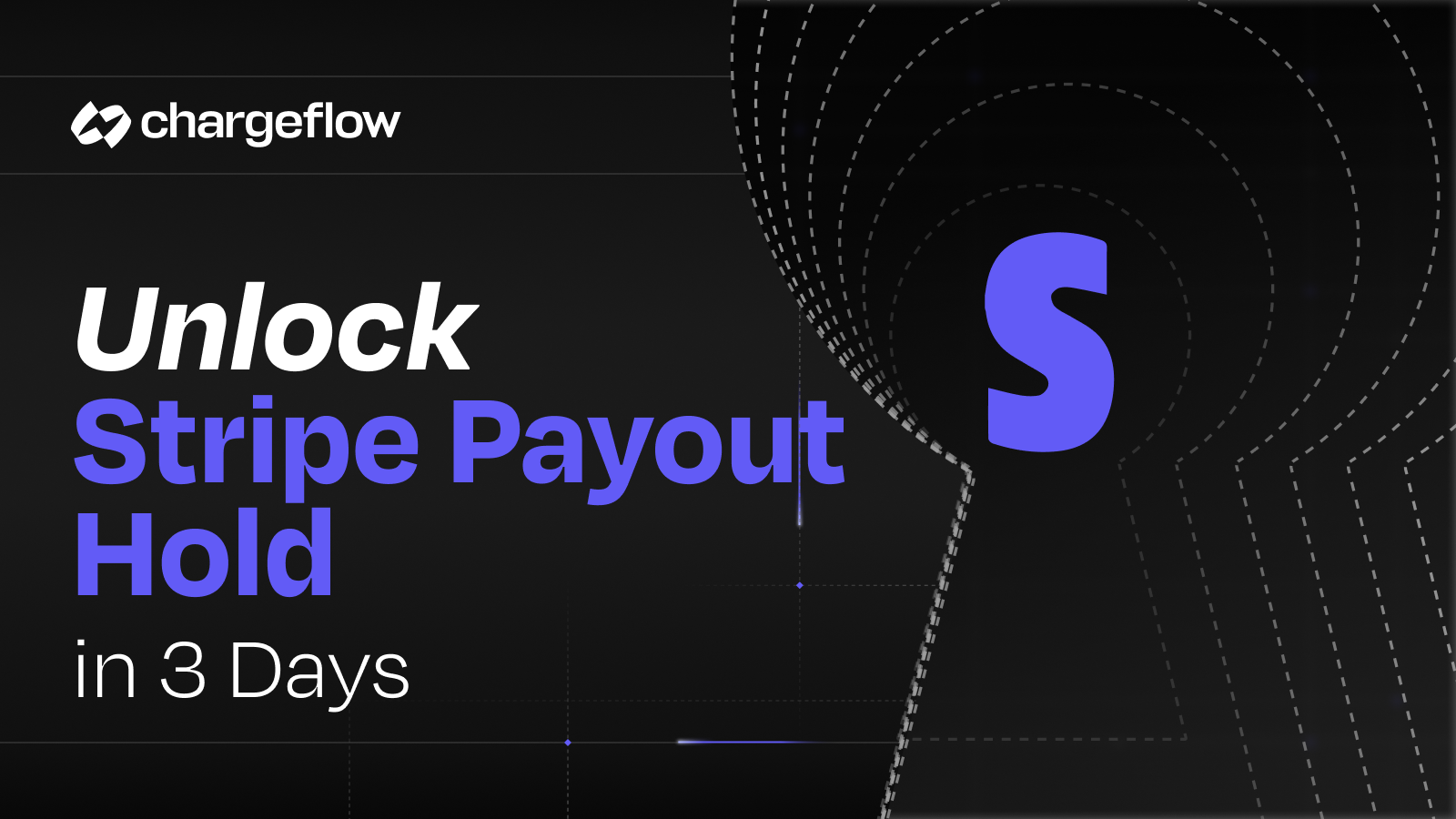How to Avoid Chargeback on PayPal: A Prevention Guide for Merchants

Chargebacks?
No longer your problem.
Recover 4x more chargebacks and prevent up to 90% of incoming ones, powered by AI and a global network of 15,000 merchants.
Prevent chargebacks on PayPal with our essential guide for merchants. Learn effective strategies to safeguard your transactions and protect business.
Chargebacks can be a significant challenge for PayPal merchants, causing financial losses and damaging their reputations. As a merchant, it is crucial to understand how chargebacks work and implement effective prevention strategies.
In this guide, we will explore the ins and outs of chargebacks and provide you with valuable insights on how to avoid them. By following the best practices outlined here, you can protect your business, maintain customer satisfaction, and ensure a smooth payment process.
So, let's delve into the world of chargebacks and equip you with the knowledge to safeguard your PayPal transactions.
Best Practices for Chargeback Prevention
When it comes to running an online business and accepting payments through PayPal, chargebacks can be a real headache. Not only do they result in financial losses, but they also tarnish your reputation as a merchant.
To avoid chargebacks and their negative consequences, it's crucial to implement the best practices for chargeback prevention. Here, we will explore effective strategies that will help you protect your business and maintain customer satisfaction.
1. Clear Communication and Transparency
One of the fundamental pillars of chargeback prevention is clear communication and transparency with your customers. By setting clear expectations and providing comprehensive information, you can significantly reduce the risk of chargebacks. Here's what you need to do:
- Clearly state your refund and cancellation policies on your website. Make sure they are easily accessible and understandable.
- Provide detailed product descriptions, including images and specifications. This helps customers make informed purchasing decisions, minimizing the chances of dissatisfaction.
- Include contact information for customer support. Make it easy for customers to reach out to you in case they have any questions or concerns.
- Regularly update your customers about order status and shipping details. By keeping them informed, you reduce the likelihood of disputes arising from confusion or uncertainty.
2. Secure Payment Processing
Ensuring secure payment processing is essential for minimizing chargebacks resulting from fraudulent activities. PayPal offers various fraud prevention tools and features that you can leverage. Here are some best practices:
- Utilize PayPal's fraud detection system. Enable features such as Seller Protection and PayPal's Fraud Management Filters to automatically identify and prevent suspicious transactions.
- Implement a secure payment gateway or processor that complies with industry standards. This adds an extra layer of security to your transactions.
- Use address verification and Card Verification Value (CVV) checks. These measures help confirm the authenticity of the customer's billing address and credit card information.
- Enable 3D Secure for added authentication. This feature requires customers to enter a one-time password or PIN, reducing the risk of unauthorized transactions.
3. Prompt Customer Service and Conflict Resolution
Providing excellent customer service and resolving conflicts promptly can go a long way in preventing chargebacks. By addressing customer concerns in a timely and satisfactory manner, you can prevent disputes from escalating into chargebacks. Here's what you should do:
- Respond to customer inquiries and concerns as quickly as possible. Aim to provide timely solutions to any issues they may have.
- Offer multiple channels for customer support, such as phone, email, and live chat. This ensures that customers can easily reach out to you through their preferred communication method.
- Train your customer service team to handle disputes professionally and empathetically. By addressing customer complaints effectively, you can turn potentially chargeback-inducing situations into opportunities for customer satisfaction.
- Keep detailed records of all interactions with customers. This includes notes from phone calls, email exchanges, and any other form of communication. These records can serve as evidence in case of chargebacks.
4. Robust Order and Shipping Processes
Efficient order and shipping processes not only enhance customer experience but also minimize chargeback risks. By ensuring a smooth order fulfillment and delivery process, you can mitigate issues that may lead to chargebacks. Consider the following best practices:
- Use reliable shipping methods that provide tracking numbers. This allows customers to monitor the progress of their orders and reduces the chances of disputes arising from undelivered packages.
- Require signature confirmation for high-value orders. This provides an extra layer of proof that the customer received the product.
- Provide shipping notifications and updates to customers. Keep them informed about the status of their orders at every step, from processing to shipping and delivery.
- Maintain thorough records of order fulfillment and delivery. This includes tracking numbers, proof of shipment, and customer signatures. These records can serve as evidence in case of disputes or chargebacks.
5. Effective Fraud Detection and Prevention
Staying vigilant against fraud is crucial for chargeback prevention. By implementing effective fraud detection and prevention measures, you can minimize the risk of fraudulent transactions. Consider the following strategies:
- Implement fraud detection systems and tools that analyze transaction patterns and identify suspicious activity.
- Monitor transactions for any unusual or suspicious behavior. Look for indicators such as multiple transactions from the same IP address or rapid-fire purchases.
- Verify customer information and validate orders. Ensure that the billing and shipping addresses match, and contact customers if there are any discrepancies.
- Stay updated on the latest fraud trends and prevention techniques. Keep abreast of industry news and best practices to stay one step ahead of fraudsters.
Working with PayPal's Dispute Resolution Process
Resolving disputes and chargebacks efficiently is crucial for merchants using PayPal as their payment gateway. PayPal provides a comprehensive dispute resolution process that aims to protect both buyers and sellers.
Here, we will walk you through the steps involved in working with PayPal's dispute resolution process, helping you navigate through potential chargebacks and disputes effectively.
1. Understanding PayPal's Dispute Resolution Process
When a customer initiates a dispute or chargeback, PayPal acts as an intermediary to facilitate communication between the buyer and the seller. PayPal's goal is to reach a fair resolution for both parties involved. It's important to familiarize yourself with the dispute resolution process to ensure a smooth experience.
2. Responding to a Dispute or Chargeback
When you receive a notification from PayPal regarding a dispute or chargeback, it's essential to respond promptly. Log in to your PayPal account and navigate to the Resolution Center, where you can view and manage all disputes.
Take the following steps:
- Review the Dispute Details: Carefully read the buyer's claim and assess the situation. Understand the reason for the dispute and gather any relevant information or evidence to support your case.
- Communicate with the Buyer: PayPal provides a messaging system within the Resolution Center. Reach out to the buyer to discuss the issue and attempt to find a resolution amicably. Maintain a professional and courteous tone throughout your communication.
- Provide Compelling Evidence: If you believe the buyer's claim is unfounded or inaccurate, gather evidence to support your position. This could include order details, shipping/tracking information, customer communication, or any other relevant documentation. Upload these documents to the Resolution Center to strengthen your case.
- Respond to PayPal's Requests: PayPal may require additional information or documentation to further investigate the dispute. Cooperate with PayPal and provide the requested details within the specified timeframe. Failure to respond promptly may result in an unfavorable outcome.
3. PayPal's Decision and Finalizing the Dispute
After reviewing the evidence and statements from both parties, PayPal will make a decision regarding the dispute. This decision is based on various factors, including PayPal's policies and the evidence presented. PayPal will notify you of the resolution through email or within the Resolution Center.
- Accepting the Decision: If the decision is in your favor, PayPal will release the funds back to your account. Ensure that you complete any necessary actions to fulfill the buyer's requirements, such as issuing a refund or reshipping an item.
- Appealing the Decision: If you disagree with PayPal's decision, you may have the option to appeal. Review PayPal's guidelines on appeals carefully, as there may be specific criteria and deadlines to follow. Provide additional evidence or details that support your case, and clearly articulate why you believe the decision should be reconsidered.
4. Continuous Improvement and Prevention
While disputes and chargebacks are inevitable in some cases, there are measures you can take to minimize their occurrence:
- Enhance Communication: Clearly communicate your policies, product descriptions, and return/refund procedures to buyers. Make sure your website or platform provides comprehensive information about your products or services.
- Maintain Excellent Customer Service: Promptly respond to customer inquiries, provide accurate information, and address concerns or issues promptly and professionally. A positive customer experience can often prevent disputes from escalating.
- Secure Shipping and Tracking: Utilize reliable shipping methods that include tracking and delivery confirmation. This provides proof of delivery and can help resolve disputes related to item receipt.
- Keep Detailed Records: Maintain comprehensive records of all transactions, customer interactions, and any relevant documentation. This includes order details, shipping receipts, tracking numbers, and communication with buyers.
By understanding and effectively utilizing PayPal's dispute resolution process, you can navigate through disputes and chargebacks with
PayPal Dispute Automation with Chargeflow
PayPal Dispute Automation is a service that helps merchants automate the dispute management process for PayPal disputes. Chargeflow uses artificial intelligence and machine learning to automatically identify and respond to PayPal disputes, which can help merchants save time and money.
How does PayPal Dispute Automation work?
Chargeflow works by automatically identifying PayPal disputes. Once a dispute is identified, Chargeflow will automatically gather all of the relevant information, such as the order details, tracking information, and customer communication. Chargeflow will then use this information to create a custom dispute response. The dispute response will be sent to PayPal on your behalf.
What are the benefits of using PayPal Dispute Automation?
There are many benefits to using PayPal Dispute Automation, including:
- Save time: Chargeflow can free up your time by automatically responding to PayPal disputes. This means you can focus on other aspects of your business, such as customer service or marketing.
- Increased recovery rates: Chargeflow has a proven track record of increasing merchant recovery rates. In fact, Chargeflow merchants recover an average of 95% of disputed funds.
- Improved customer satisfaction: Chargeflow can help improve customer satisfaction by providing a quick and efficient dispute resolution process. This can help you build customer loyalty and reduce churn.
If you are a PayPal merchant who is looking for a way to save time, increase recovery rates, and improve customer satisfaction, then PayPal Dispute Automation is the right choice for you.
To learn more about PayPal Dispute Automation, contact Chargeflow today!

Chargebacks?
No longer your problem.
Recover 4x more chargebacks and prevent up to 90% of incoming ones, powered by AI and a global network of 15,000 merchants.






























.png)








